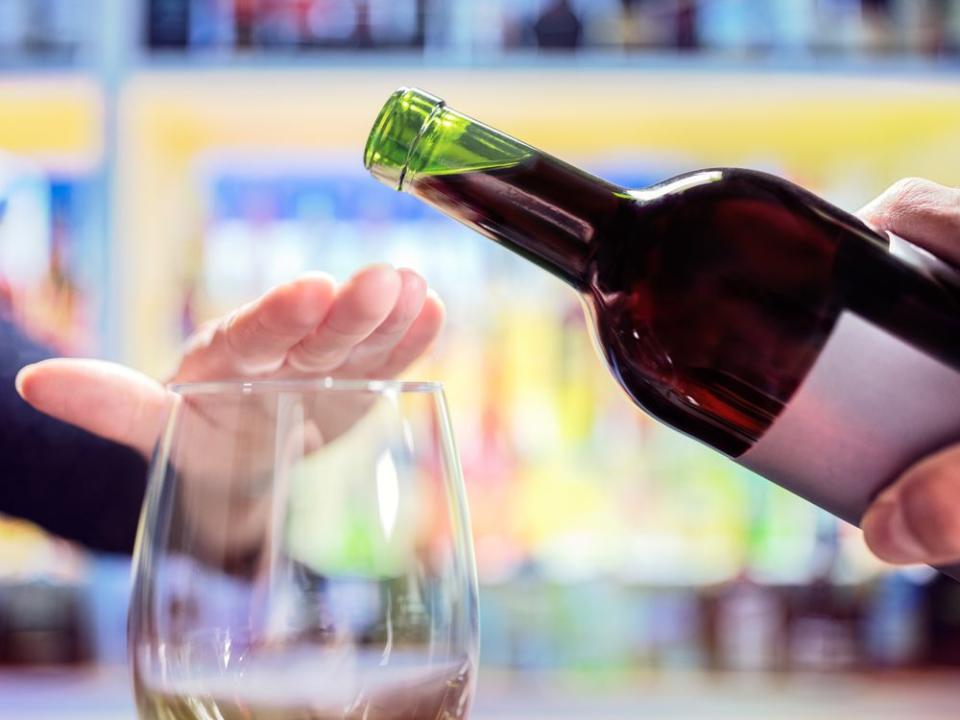Drinking Less Wine? You're Not Alone
I love wine as much as the next guy. As a writer for Food & Wine, if I didn't, I'd be failing at half my job. And as a reader, you're probably right there with me. But as far as the general population is concerned, a few new reports suggest that Americans' lust for wine may have peaked.
On Monday, the drinks analysists at IWSR presented their 2019 year-end report, and the biggest news was that total U.S. wine consumption appears to have dropped for the first time in 25 years, slipping 0.9 percent from 2018's total. The end of a two-decade-plus positive run sounds dire, but it's worth noting that annual wine consumption had essentially doubled over that period—something that can't be said about the U.S. drinking population—so it was probably only a matter of time before America's thirst for wine hit maximum capacity.

However, another new report released this week may paint a slightly direr long-term picture: Also released Monday, Wine Intelligence's U.S. Landscapes 2020 suggests that though more people are drinking wine, the number of "regular" drinkers is shrinking, especially among younger generations, leaving older drinkers as the "saviors of the wine category."
The report explains that though the number of "at least once a year" wine drinkers has gone up 8 million people since 2015 to 118 million Americans, the number of "once a month" drinkers has fallen by 11 million over that same period to 77 million people, "meaning that only one in three adult Americans now drinks wine at least once a month." And importantly, "the vast majority of the loss—8.5 million or 77 percent of the decrease—has come from those aged 21 to 34."
Wine Intelligence points to two factors. "First, this generation is at the forefront of the tendency to drink relatively less alcohol than their parents' generation at the same stage, and spend more time and money on health and lifestyle such as a regular yoga class," the site writes. "Second, their alcoholic beverage portfolio includes a broader swathe of products than their peers of 30 years ago, including craft beer, spirits, hard cider and hard seltzer."
Meanwhile, IWSR points to another phenomenon that could contribute to the trend. "It's also interesting to note that the value increase of beverage alcohol in the U.S. continues to outpace volume growth," Brandy Rand, IWSR's chief operating officer for the Americas, stated, "a clear indicator that U.S. consumers are willing to pay for more premium products." The implication is that, yes, people are drinking less, but it's because they are buying better products.
These findings jibe with a third new report, Silicon Valley Bank's State of the Wine Industry 2020, which found that while wines priced under $9 per bottle continued to see declines, wines priced between $9 and $19.99 "is where most of the growth is found today." The beer industry has seen a similar trend where overall beer sales have declined while premium craft beer has continued to see growth. Still, SVB suggested that even this trend is starting to falter. "The trend and mantra of premiumization that pushed volume and price higher for the past 25 years is nearing an end," the report states. Even where SVB sees growth continuing, that growth is slowing. (Proposed 100-percent tariffs on many imported wines and spirits don't bode well for the premium market, either.)
On the bright side, none of this means you have to change your personal wine drinking habits. But it certainly seems like the American populous is changing theirs. For now. Who knows what another 25 years may bring?

